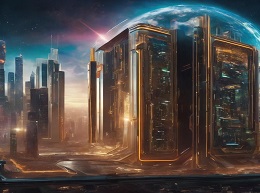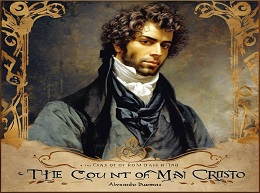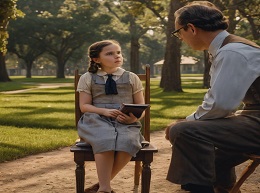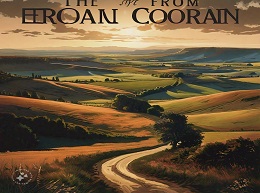Infinite Jest
An In-Depth Review of David Foster Wallace's Infinite Jest
David Foster Wallace's Infinite Jest is a monumental work of contemporary literature, renowned for its complexity, depth, and unique narrative style. Published in 1996, the novel quickly became a cult classic, celebrated for its ambitious scope and intricate structure. Set in an alternate reality, the story spans over a thousand pages and explores themes of addiction, entertainment, and the search for meaning in a fragmented world. This review aims to unpack the novel's multifaceted narrative, rich character development, and profound thematic explorations, offering insights into why Infinite Jest remains a seminal work in modern literature.
The World of Infinite Jest
The novel is set in a dystopian future where the calendar years are subsidized by corporations, leading to absurd names like the "Year of the Depend Adult Undergarment." The narrative primarily revolves around three main settings: the Enfield Tennis Academy (ETA), a prestigious sports school; the Ennet House Drug and Alcohol Recovery House; and various locations in the greater Boston area.
The Interconnected Lives
Infinite Jest weaves together the lives of several characters, each grappling with their own struggles and desires. At the heart of the story is the Incandenza family, particularly Hal Incandenza, a tennis prodigy at ETA; his brother, Orin, a professional football player; and their father, James Incandenza, the founder of ETA and a filmmaker whose final creation, an enigmatic film called "Infinite Jest," becomes a central plot device.
The Enigmatic Film
The film "Infinite Jest," also known as "the Entertainment," is a lethal piece of media that is so captivating that viewers lose all desire to do anything but watch it, ultimately leading to their demise. The search for the master copy of this film drives much of the novel's intrigue and intersects with various characters' lives, including government agents, terrorists, and addicts.
Addiction and Compulsion
One of the most prominent themes in Infinite Jest is addiction, explored through the lives of the residents at Ennet House and the students at ETA. Wallace delves into the psychological and physical aspects of addiction, portraying it as a pervasive force that shapes and often destroys lives. The novel examines not only substance addiction but also addiction to entertainment, success, and even pain.
The Nature of Entertainment
Wallace's exploration of entertainment and its impact on individuals and society is a central theme. The lethal film "Infinite Jest" serves as a metaphor for the potentially destructive power of media and entertainment. The novel questions the role of entertainment in our lives, probing whether it can serve as a form of escapism that ultimately leads to emptiness and despair.
Isolation and Connection
Despite its dense and sprawling narrative, Infinite Jest is fundamentally concerned with human connection and the isolation that many of its characters experience. Whether through addiction, the pressures of excellence, or the quest for personal meaning, characters struggle to connect with others and themselves. The novel poignantly portrays the loneliness and alienation that can accompany modern life.
The Search for Meaning
At its core, Infinite Jest is about the search for meaning in a world filled with distractions and suffering. Characters seek purpose and fulfillment in various ways, often grappling with existential questions and the nature of happiness. Wallace's portrayal of this quest is both deeply philosophical and intensely human, offering a reflection on the complexities of the human condition.
Nonlinear Narrative
Wallace employs a nonlinear narrative structure, weaving together multiple storylines and timelines. This approach can be challenging for readers but ultimately enriches the novel, mirroring the fragmented and multifaceted nature of reality. The nonlinear structure also allows for a deeper exploration of themes and characters, providing a more immersive and layered reading experience.
Footnotes and Endnotes
Infinite Jest is famously filled with extensive footnotes and endnotes, which serve various functions, from providing additional context and background information to offering humorous asides and detailed character histories. These notes add a unique dimension to the narrative, creating a sense of depth and realism while also challenging traditional storytelling conventions.
Rich Characterization
Wallace's characters are richly developed and complex, each with their own distinct voice and perspective. From Hal Incandenza's internal struggles to Don Gately's journey toward sobriety, the characters are vividly portrayed, their lives intricately connected yet profoundly individual. Wallace's deep empathy for his characters shines through, making them relatable and compelling despite their flaws and idiosyncrasies.
Hal Incandenza
Hal is one of the central characters, a gifted tennis player and intellectually brilliant yet emotionally detached young man. His struggle with identity and the pressure to meet expectations is a recurring theme. Hal's internal conflict and his inability to express his true self are emblematic of the novel's exploration of personal and societal disconnection.
Don Gately
Don Gately, a resident and staff member at Ennet House, is a recovering drug addict whose journey toward redemption is one of the novel's most poignant arcs. Gately's story provides a raw and honest portrayal of addiction and recovery, highlighting the daily struggles and small victories that define the path to sobriety.
Joelle Van Dyne
Joelle, also known as the "Prettiest Girl of All Time," is a key figure in the novel, connected to both the Incandenza family and Ennet House. Her struggles with beauty, substance abuse, and her role in the enigmatic film "Infinite Jest" add layers to the narrative, exploring themes of perception, identity, and self-worth.
James Incandenza
James, the patriarch of the Incandenza family, is a brilliant but troubled filmmaker whose creations, particularly the lethal film "Infinite Jest," have far-reaching consequences. His character represents the intersection of genius and madness, and his influence pervades the lives of those around him even after his death.
The Tennis Academy
The Enfield Tennis Academy serves as a microcosm of the novel's broader themes. The intense pressure to succeed and the characters' obsessive dedication to their craft mirror the addictive behaviors seen elsewhere in the story. The academy's rigorous environment and the characters' struggles with identity and purpose reflect the novel's exploration of ambition and its potential pitfalls.
The Recovery House
Ennet House provides a stark contrast to the elite world of ETA, offering a raw and unflinching look at addiction and recovery. The residents stories are interwoven with themes of redemption, community, and the daily battle against relapse. Gately's experiences, in particular, highlight the novel's compassionate portrayal of those grappling with substance abuse.
The Film "Infinite Jest"
The film within the novel serves as a powerful symbol of the dangers of unchecked entertainment and the allure of escapism. Its devastating effects on viewers underscore the novel's critique of media consumption and its impact on human behavior. The film's role in the narrative exemplifies Wallace's ability to blend dark humor with profound social commentary.
Infinite Jest by David Foster Wallace is a tour de force of modern literature, offering a profound and multifaceted exploration of addiction, entertainment, and the search for meaning. Its nonlinear narrative, rich characterization, and thematic depth make it a challenging yet rewarding read. Through the interconnected lives of its characters, Wallace paints a vivid portrait of contemporary society, capturing its complexities and contradictions. The novel's enduring relevance and impact attest to its status as a literary masterpiece, inviting readers to grapple with the big questions and the small details that define our existence. Whether you are drawn to its intellectual rigor, emotional depth, or dark humor, Infinite Jest is a work that continues to resonate and inspire.













